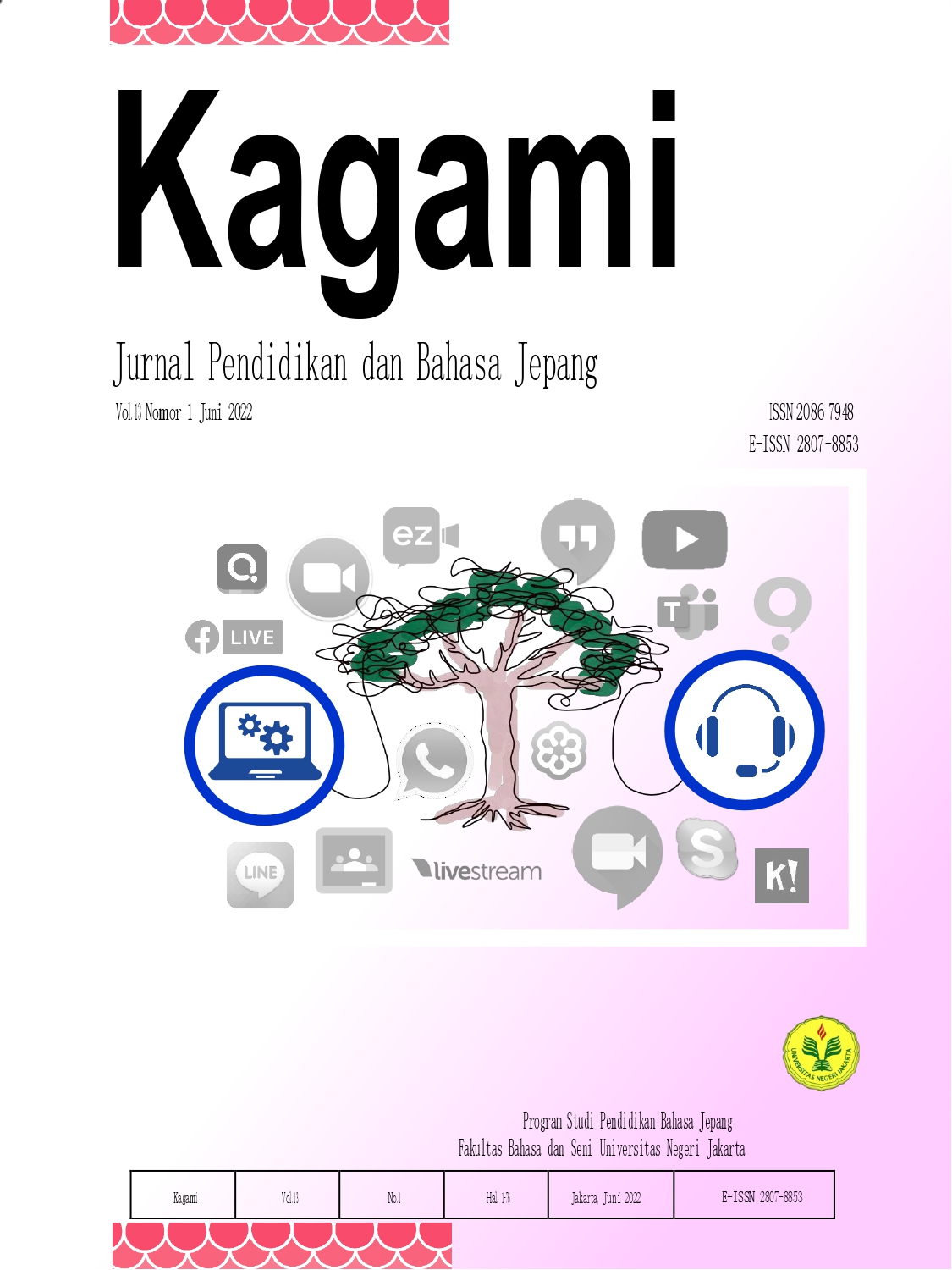Keigo's understanding by students of Japanese language education at Riau University class of 2019
Abstract
Japan is a nation that pays great attention to politeness, especially when speaking. This can be seen from the special form in expressing politeness and respect. In Japanese it is termed keigo. Keigo is a variety of respectful language used in Japanese and is one of the characteristics of the Japanese language. In general, keigo is divided into three types, namely sonkeigo, kenjougo, and teineigo. This study discusses the comprehension of keigo in terms of function, meaning, and form in class 2019 students of the Japanese Language Education Study Program, FKIP University of Riau. The purpose of this study was to find out how the understanding of keigo in class 2019 students was. The method used in this study was descriptive quantitative. The results of this study indicate that the students' understanding of the class of 2019 towards keigo as a whole is in the low category, apart from the lack of student understanding of keigo, the period of time from receiving material about keigo with the research time is quite far so it can be concluded that students have limitations in remembering the material.
References
Hermawan. (2011). Analisis Kemampuan Mahasiswa Tingkat II Program Studi Pendidikan Bahasa Jepang UPI Bandung Angkatan 2005/2006 Terhadap Pemahaman Keigo.
Human Academy. (2015). Nihongo Kyouiku Nooryoku Kenteishiken Goukaku Mondaishuu. Tokyo: Shooeisha.
Malayu SM, Muliadi YA. Students’ ability in the use of speech act
(Keigo): a comparative study on two Japanese study programs in north Sumatera and Riau. International Journal of Research and Review. 2019; 6(11):92-98.
Mawitjere. I. 2019. Analisis Kesalahan Penggunaan Keigo Oleh Pembelajar Bahasa Jepang. Kompetensi Jurnal Ilmiah Bahasa dan Seni, 16 (1).
Meisa, W. (2014). Analisis Kesalahan Penggunaan Keigo pada Pembelajar Bahasa Jepang: Studi Deskriptif Pada Mahasiswa Tingkat III Jurusan Pendidikan Bahasa Jepang Universitas Pendidikan Indonesia Tahun Ajaran 2012/2013 (Doctoral dissertation, Universitas Pendidikan Indonesia).
Sudjianto, & Ahmad, D. (2014). Pengantar Linguistik Bahasa Jepang. Jakarta Pusat: Kesaint Blanc.
Sutedi, D. 2011. Dasar-dasar Linguistik Bahasa Jepang. Bandung: Humaniora.
Wahyu, M. A. K. (2008). Analisis Kemampuan Mahasiswa dalam Penggunaan Keigo. Skripsi, Universitas Komputer Indonesia.
Widiasworo, Erwin. 2017. Strategi Dan Metode Mengajar Siswa Di Luar Kelas.
Yogyakarta: Ar-ruzz Media.
Yulianti, S. (2019). Studi Kasus Penggunaan Ragam Bahasa Hormat (Keigo) oleh Mahasiswa Jepang di Universitas Hiroshima (Doctoral Dissertation, Universitas Brawijaya).
Copyright (c) 2022 Syeren Rohmadany

This work is licensed under a Creative Commons Attribution 4.0 International License.




